Pamir Mountains – Tajikistan #7 – July 2014
The Wakhan Corridor had been an integral part of our dream to drive the Silk Road across Asia, and to this point, it had been nothing less than spectacular. Looking at our maps, the road we were on actually continued along questionable trails all the way to the Chinese border where it would intersect with the Karakorum Highway. It could have been an interesting adventure but we still had no Chinese visa and our mandatory Chinese guide would be waiting for us at the Turugart Pass border in Kyrgyzstan, two countries and 2,600 miles away. We knew we could not be late.
After crossing the Khargush Pass, 4,344m (14,251 ft.), we camped above a pretty lake for the night. We were now in the National Park of Tajikistan, home to over 400 lakes and three of the biggest glaciers in the region along with ten smaller glaciers.
In the morning the dirt road joined the pavement of the Pamir Highway, reported to be even more beautiful than parts of the Wakhan Corridor. It would take us back to Khorog along a route we would need to retrace on our way northeast to Kyrgyzstan. No matter. This was what we came to see.
The Roof of the World
In every new country one of the most fascinating elements are the people. We were now getting to know a little more about the Pamiris or Pamirian or Mountain Tajiks. Some live in Afghanistan, China, and Pakistan. The vast majority of Pamiris live in a semi-independent area inside Tajikistan called the Gorno-Badakhshan Autonomous Region, (GBAO), in the high valleys of the western Pamirs known as the “Roof of the World” in Persian (Farsi). These mountains are the second highest in the world after the Himalayas with several peaks over 20,000 feet (7,000 meters).
Pamiris live close to one another in small remote villages. Perhaps because of the extreme climate, often over 12,000 feet (3,900 meters), and the harshness of life, they seemed to have an openness towards strangers. Few places in the entire former Soviet Union are as remote as this. It was just a feeling.
Hitting the blacktop of the Pamir Highway, the overloaded Chinese trucks that now follow this route had pretty much destroyed parts of the pavement. On a tip from a traveler we had met in Uzbekistan, we turned off on a side road to search for a hot spring. We did find herds of yaks in a beautiful valley. Women from scattered yurts were making fresh yogurt or cheese. The obvious river crossing leading to the hot springs was a little too deep and swift to try alone. It took all of low range 4X4 with our ARB front differential locker engaged and the TruTrac limited slip on the rear to climb back up the 45° ball-bearing slope to the barren top.
The People of the Pamir Mountains
Back on the Pamir highway, heading downhill towards Khorog, we came to the village of Morgh (or Morj) and had just waited for a herd of goats to cross when we were waved down by a young boy who was jumping up and down with excitement and motioning us to stop. OK. The boy insisted we come to his home for chai, (tea). He did not speak a word of English. In fact, he was mute and deaf, yet extremely intelligent and an amazing communicator. We met his family and he proudly showed us a diploma of excellence he had received from a special school he attended in Dushanbe. The boy showed us his swing and we compared kitchens in our camper. His name was Sheroz, a name of another person that would play an important part of our lives during the coming years.
At his grandma’s house, we enjoyed hot tea with cookies, bread and fresh yak butter. Her home and that of his aunt were simple, built of rock and mud, but immaculately neat and clean inside. A cousin was working outside making repairs to the mud walls, one handful at a time. Grandma was later busy in the garden cutting grass with a sickle. Firewood was neatly stacked and ready for winter.
As we left, Sheroz was waving and playing with his own handmade two-wheeled “truck”. Into the next valley there was a surprise waiting for us, one that would change our lives forever. There she was, with a knowing look as if she had been waiting for us, like “What took you so long?” “The Magic Girl of the Pamirs”.
The Magic Girl of the Pamirs
- The track climbed higher and higher into the rarified air.
- Living a long-held dream is always a reason to smile.
- The snowcapped glacier-clad peaks loomed on the distant horizon.
- Our Garmin GPS showed an altitude of 4,287 meters, (14,064 feet).
- The National Park of Tajikistan is home to over 400 lakes and three of the biggest glaciers in the region, along with ten smaller glaciers.
- An occasional monument or roadside alter always included the reminders of the Marco Polo sheep, now on the “near threatened” list.
- This roadside shrine was adorned with Marco Polo sheep horns.
- Somewhere on Yashikul Lake were supposedly nice hot springs to be found.
- Searching for a hot spring, we stopped at this village to ask for directions. It was interesting to see this classic Russian style water basin on a post.
- This well-built home had some beautifully painted Russian style windows.
- The standard home construction was still stacked rocks and mud and maybe stucco later.
- Our stash of fresh apricots was holding up just fine in our Dometic Koolatron compressor refrigerator.
- Yak dung or garden waste, whatever would burn, was saved for winter fuel.
- We continued to enjoy some spectacular wild camps by just pulling off the road a few hundred yards.
- Digging a hole or using a big rock is always an easy way to quickly level our camper.
- Dropping down into a beautiful meadow there were herds of yaks grazing peacefully.
- Women were preparing fresh yogurt or cheese over an open fire.
- It took all of low range 4X4 with our ARB front differential locker engaged and the TruTrac limited slip on the rear to climb back up the 45° ball-bearing slope to the barren top.
- The big Chinese semi-tractor trailers were busy tearing up what was left of the blacktop and in places, the dust was billowing high.
- Always surrounding us were the beautiful snowcapped peaks of the Pamir Mountains.
- Even at these high altitudes our Eberspächer D5 Hydronic coolant heater and our Eberspächer Airtronic air heater both functioned perfectly thanks to the new barometric altitude compensating kit. Bertrand, their mascot, was happy about it. (https://www.eberspaecher.com/en/)
- A herd of goats on the road was a sure sign of civilization ahead.
- Life is very manual in the Pamirs.
- Sheroz’s grandmother was cutting grass in the garden with a sickle.
- This young boy, Sheroz, was mute and deaf but his amazing intelligence allowed him to communicate without words.
- Sheroz proudly showed us the diploma of excellence he had received from his school in Dushanbe.
- We presented him with one of our information cards.
- Sheroz’s grandmother spoke Russian and was able to give us some information about the young boy.
- The family was delighted we had stopped.
- At Sheroz’s Grandma, we enjoyed hot tea with cookies, bread and fresh yak butter.
- Sheroz (far right) and his cousins posed for a photo with Gary.
- Their home was traditionally constructed of rock & mud and immaculately neat and clean inside.
- This lady visiting with her granddaughter insisted we take her picture.
- Sheroz’s aunt generously showed us her house.
- We marveled at the traditional roof construction of this Pamiri home.
- These traditional homes were obviously made for whatever the freezing winter storms could throw at them.
- The roofs were used to store hay.
- A cousin was busy making annual repairs with a fresh layer of mud. You learn to use what you have.
- In the summer, they often use an outdoor kitchen.
- Sheroz showed us their kitchen and we showed him ours, quite a difference.
- Sheroz demonstrated his swing in front of the outdoor kitchen.
- Driving his own homemade truck, Sheroz waved good bye to us.
- Little did we know that we would soon meet “The Magic Girl of the Pamirs”.



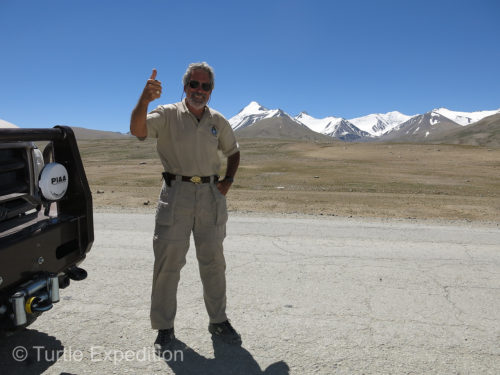
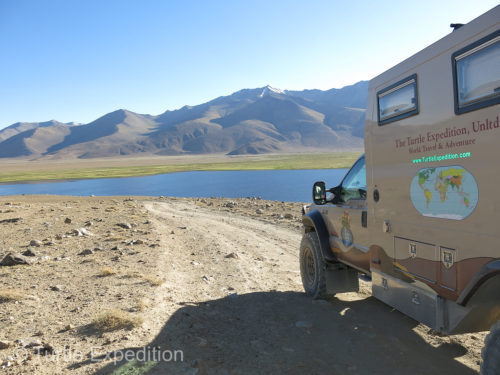
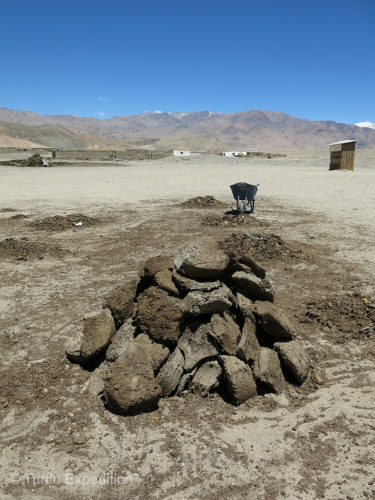
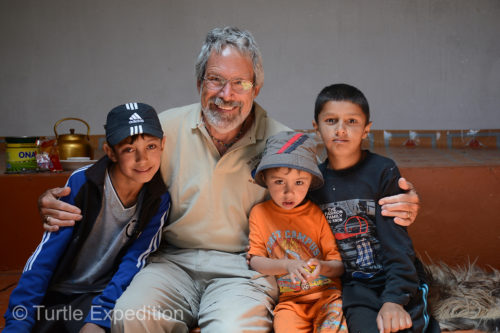
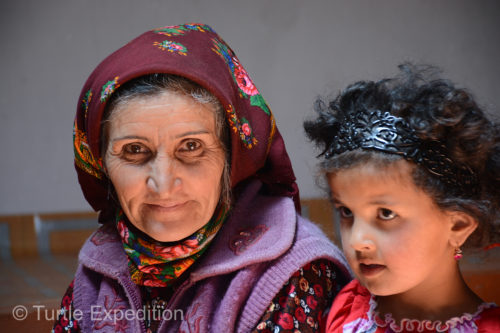
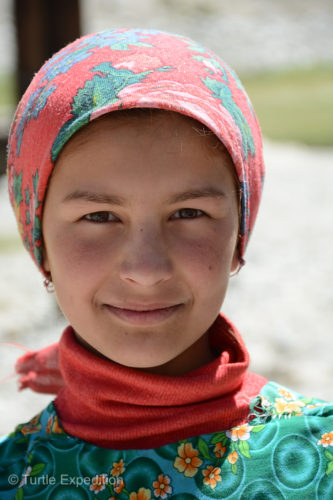
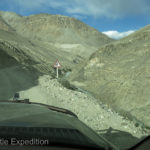
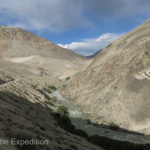
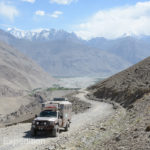
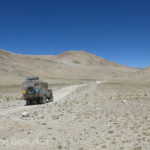

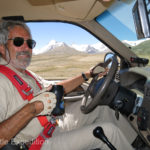
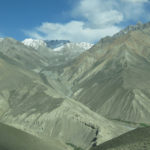
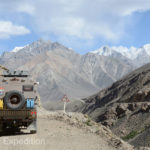

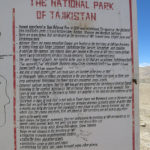
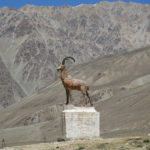
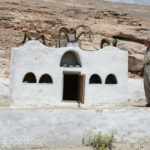
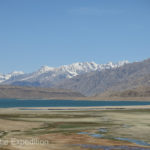
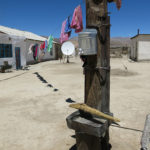
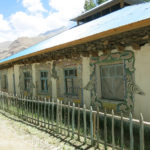
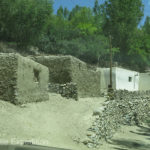

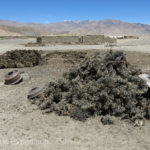
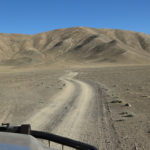
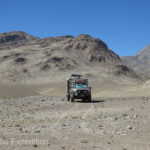
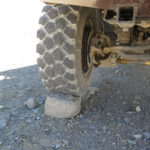
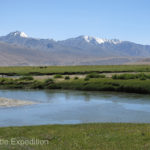
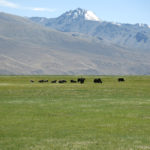
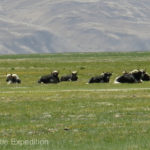
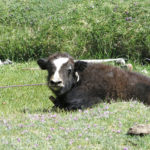
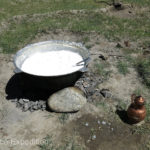
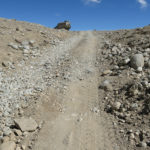
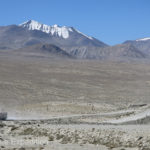
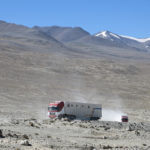
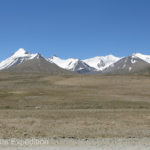

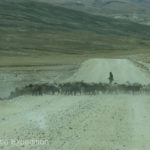
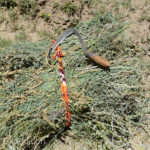
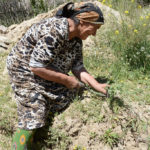

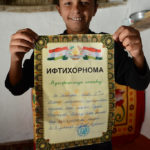
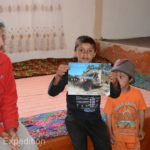
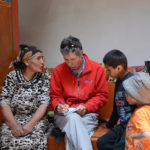
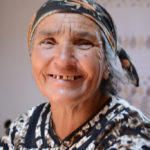
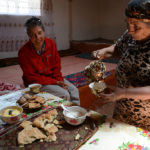

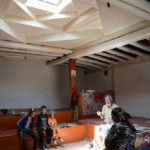
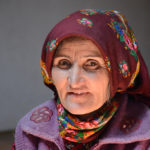
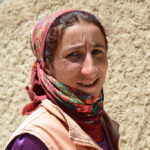

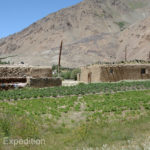
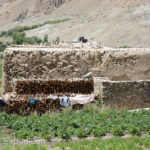
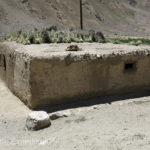
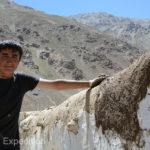
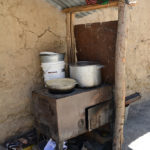
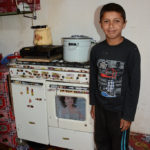
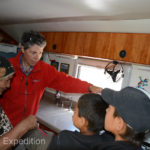
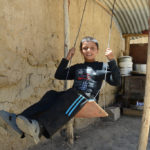
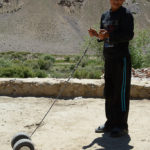
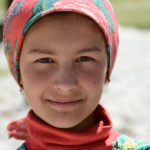





Leave a Comment